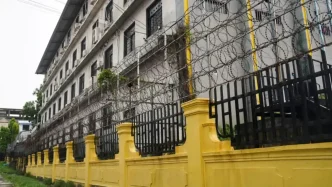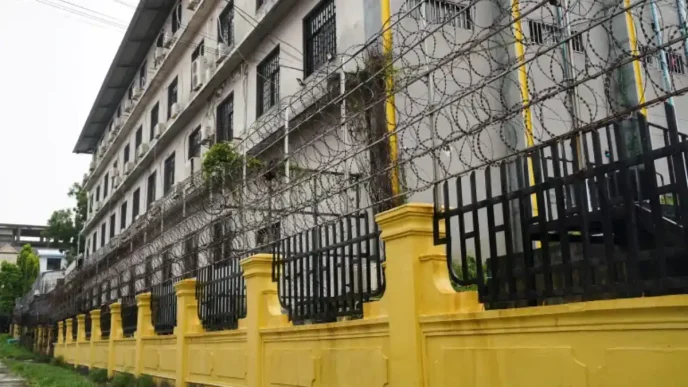By Duc Nguyen, South East Asia Correspondent
The Philippines’ Commission on Elections (Comelec) has launched the final phase of ballot distribution for the National Capital Region (NCR) ahead of the 12 May 2025 national elections, delivering 7.5 million ballots to local treasurers in a two-day operation. With other regions already equipped and security forces overseeing logistics, Comelec is intensifying efforts to ensure a transparent and efficient electoral process, inviting public scrutiny to bolster trust in a nation where elections are fiercely contested.
Comelec Chairman George Erwin Garcia announced on 6 May that the NCR’s ballot shipment, the last major dispatch for the 2025 polls, began at the National Printing Office in Quezon City. The operation, split into two batches, targets the Philippines’ most populous region, home to over 13 million voters. On 6 May, ballots reached Caloocan, Marikina, Pasig, Valenzuela, Quezon City, Malabon, Navotas, and San Juan. The second batch, dispatched on 7 May, covered Muntinlupa, Pateros, Taguig, Manila, Makati, Pasay, Las Piñas, Mandaluyong, and Parañaque. “On this day, we will begin the last shipment—the delivery of ballots. This will happen in NCR,” Garcia told reporters, underscoring the milestone.
The NCR distribution follows the completion of ballot deliveries to other regions by 30 April–1 May, with ballots now stored in municipal and city treasurers’ offices nationwide. Garcia noted: “It means that ballots for other regions have already been distributed. They are already in the offices of treasurers of municipalities and cities.” This phased approach reflects Comelec’s strategy to streamline logistics in a country of over 7,000 islands, where geographic and logistical challenges often test electoral preparedness.
Transparency and Security Measures
To reinforce public confidence, Comelec has invited political parties, candidates, interest groups, and citizens’ organisations to monitor the ballot shipments at local treasurers’ offices. “This is for them to witness, in the meantime, where the ballots will be stored while they are not yet distributed to the electoral board members,” Garcia said. The move addresses longstanding concerns about electoral integrity in the Philippines, where allegations of fraud have historically sparked protests and legal battles.
Security is a priority, with personnel from the Philippine National Police (PNP) and Armed Forces of the Philippines (AFP) escorting shipments to prevent tampering or theft. The ballots, printed under strict oversight at the National Printing Office, will remain in treasurers’ offices until handed to electoral board (EB) members—typically teachers tasked with managing polling precincts—by 11 May or, in some cases, on election day, 12 May.
Garcia clarified that NCR’s proximity allows for flexible distribution timelines. “If they are intended for NCR, usually, they are picked up at dawn because of the proximity,” he said. “But ballots are usually deployed by the treasurer’s office at least one day before the election.” For remote areas, early delivery is permitted to accommodate travel challenges, ensuring all 67,000 polling precincts are ready. This adaptability underscores Comelec’s efforts to balance efficiency with accessibility in a diverse archipelago.
Final Testing and Electoral Readiness
As ballots reach their destinations, Comelec is concluding the final testing and sealing of automated counting machines (ACMs), a critical step to verify their functionality. The process, set to wrap up on 7 May but extended to 8 May in some areas, involves EB members testing ACMs with official ballots among 10 registered voters per precinct. “These actions are meant to ensure, in front of everyone, that the machines are working properly,” Garcia said, reinforcing Comelec’s commitment to transparency.
The testing follows the nationwide distribution of ballots, which began on 22 April for regions outside NCR. With over 18,000 elective positions at stake—from president to municipal councillors—the 2025 elections are a high-stakes exercise in democratic governance. Comelec’s automated election system (AES), using ACMs to tally votes, has been certified to “operate properly, securely, and accurately,” addressing concerns raised during past polls about technical glitches.
Garcia’s leadership has prioritised proactive measures to mitigate risks. By extending testing deadlines and inviting public oversight, Comelec aims to preempt disputes in a nation where electoral controversies often escalate. The commission’s logistics, backed by 1,200 PNP and AFP personnel for NCR alone, reflect a robust framework to safeguard the vote.
Philippines’ Electoral Context
The 2025 elections, set for 12 May, are a pivotal moment for the Philippines, a country of 114 million where democracy is vibrant but fraught with challenges. The NCR, encompassing Metro Manila, is a political and economic hub, making its electoral logistics a focal point. With 7.5 million ballots for NCR—part of 76 million nationwide—the scale of Comelec’s operation is immense.
Past elections have faced scrutiny over vote-buying, machine failures, and logistical delays, particularly in remote regions. The 2022 presidential election, which saw Ferdinand Marcos Jr.’s landslide victory, was praised for its efficiency but criticised for alleged irregularities. Comelec’s 2025 preparations, including early ballot distribution and public monitoring, signal a response to these concerns, aiming to uphold the Philippines’ reputation as Southeast Asia’s oldest democracy.
The commission’s transparency push aligns with broader democratic reforms. By inviting civic groups to observe, Comelec taps into the Philippines’ active civil society, which includes organisations like the Parish Pastoral Council for Responsible Voting (PPCRV). This collaborative approach contrasts with more centralised electoral systems in the region, highlighting the Philippines’ participatory model.
Challenges and Resilience
Despite progress, challenges loom. The NCR’s dense urban landscape complicates logistics, with traffic and security risks requiring precise coordination. Remote areas, such as Mindanao’s conflict-prone regions, demand additional resources to ensure safe delivery. Comelec’s decision to allow early distribution for far-flung areas addresses these disparities, but Garcia’s team must maintain vigilance to prevent disruptions.
The extended testing deadline (8 May) reflects flexibility but risks perceptions of uneven preparedness. Garcia’s assurance that ACMs are reliable will face scrutiny during the 10 May–11 May pre-election period, when media and watchdogs intensify oversight. Public trust hinges on flawless execution, particularly in NCR, where political rivalries are intense.
The Philippines’ electoral resilience is evident in its history of overcoming logistical and political hurdles. The 2025 polls, with over 45 million expected voters, test Comelec’s capacity to deliver under pressure. Garcia’s call for public involvement—“to witness where the ballots will be stored”—is a strategic move to share accountability, fostering a collective stake in the process.
Looking Ahead
As election day nears, Comelec’s focus shifts to the final handover of ballots to EB members, expected by 11 May in most areas. The commission’s logistics, security, and transparency measures set a strong foundation, but success depends on execution. With PNP and AFP support, Comelec is well-positioned to deter threats, while public monitoring enhances credibility.
The Philippines’ 2025 elections are more than a procedural exercise; they are a testament to a nation’s democratic spirit. By prioritising transparency and adaptability, Comelec navigates a complex landscape, ensuring millions of voices are heard. As ballots reach polling stations and machines are tested, the stage is set for a defining moment in Southeast Asian democracy.














